You can also listen to this article in the voice of own Plastic Artist Rosângela Vig:

The Beauty ennobles the sensibility and sensitizes the reason. It teaches to assign a value to the shape. One learns to love the things unselfishly, with the Beauty just because of its shape. (SCHILLER, 2004, p.84)
For Schiller (1759-1805), to beautiful work binds to ethical issues because it transcends the material, to promote subjective feelings. The Beauty, in this sense, awakes, pleasurable feelings in mind, through the appreciation, of the artist's intentions.
In this sense, the great work allows itself to be uncovered and to unveil new meanings, every new look. That purpose became clear in Renaissance Art and in particular the Flemish painting, which flourished between the fifteenth and the seventeenth centuries, in the Northern Europe.
The Flemish Art, as it is called, meets the artistic productions of the Flanders region, at the time, located in the range between Belgium, the Netherlands and neighboring regions, such as France and Germany1.
The venue, in the Middle Ages, consisted of fiefs, and received the name Low Countries in the sixteenth century, by the Emperor Charles V of Spain. Seven provinces, were part of the region, including Belgium and Luxembourg.
Belgium and Luxembourg, separated in the nineteenth century and only the Netherlands became part of the Low Countries. The name is due to the location be very flat and have part of its territory below the sea level, protected by dikes and dams.
Northern Europe was deeply affected by the Protestant Reformation in the sixteenth century and, after a period of power struggles and religious crises, the kings of France and Spain imposed their dominance, in the region. Changes in Flanders destination have left clear marks on the Art that has developed there.
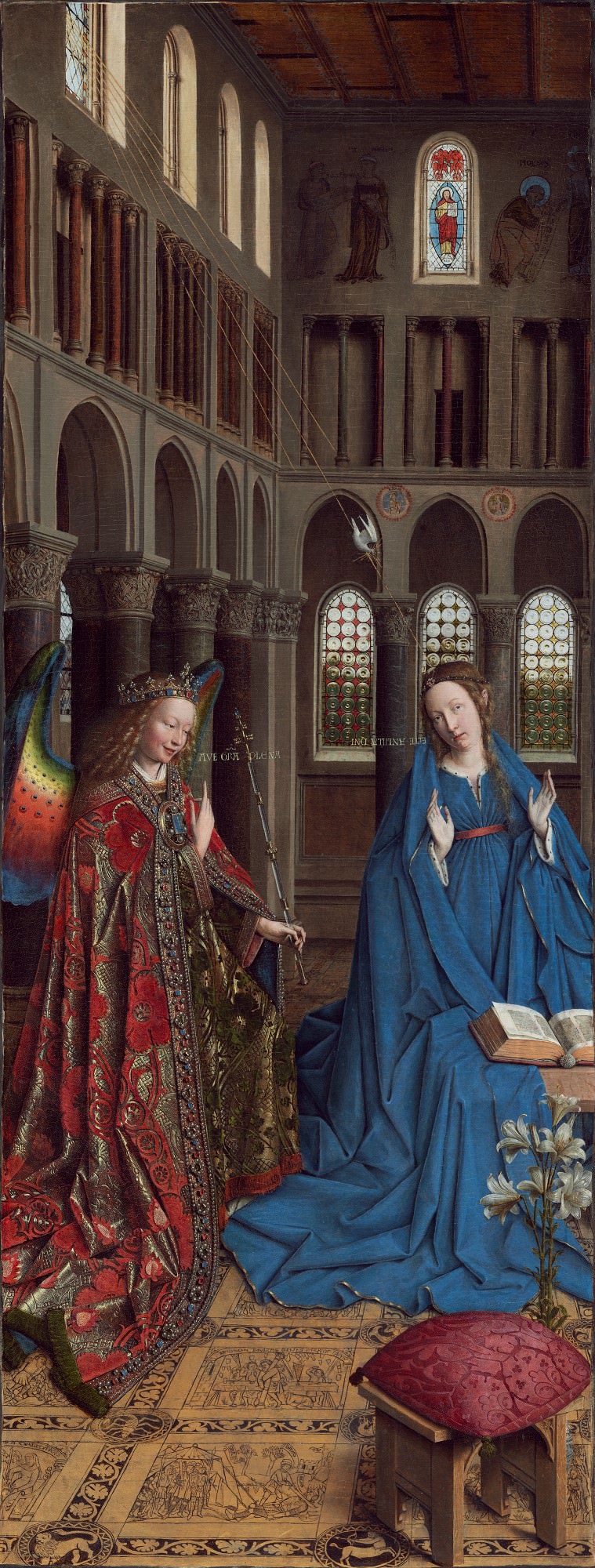
The trade routes, between the Northern and the Southern Europe favoured the cultural Exchange, and eventually inspired the Flemish artists.
Remarkable names came from there, and the region still attracted young painters, from neighboring countries, who were invited to work in the courts. The Flemish painters had an amazingly realistic technique, and the development and popularization of oil painting, is attributed to the first ones of them2.
Their Art originated in the end of Gothic, also called the Late Gothic, in the Middle Ages.
Are considered the founders of the Flemish School pre-Renaissance, or "Master of Flémalle" (whose name probably was Robert Campin) (1375-1444) and Jan Van Eyck (1380/90-1441) (Fig. 1). Later on, there were other names such as Rogier van der Weyden (1400-1464) (Fig. 2), Petrus Christus (1410/20-1475/6), Hans Memling (1430-1494) and Hugo van der Goes (1440-1482).
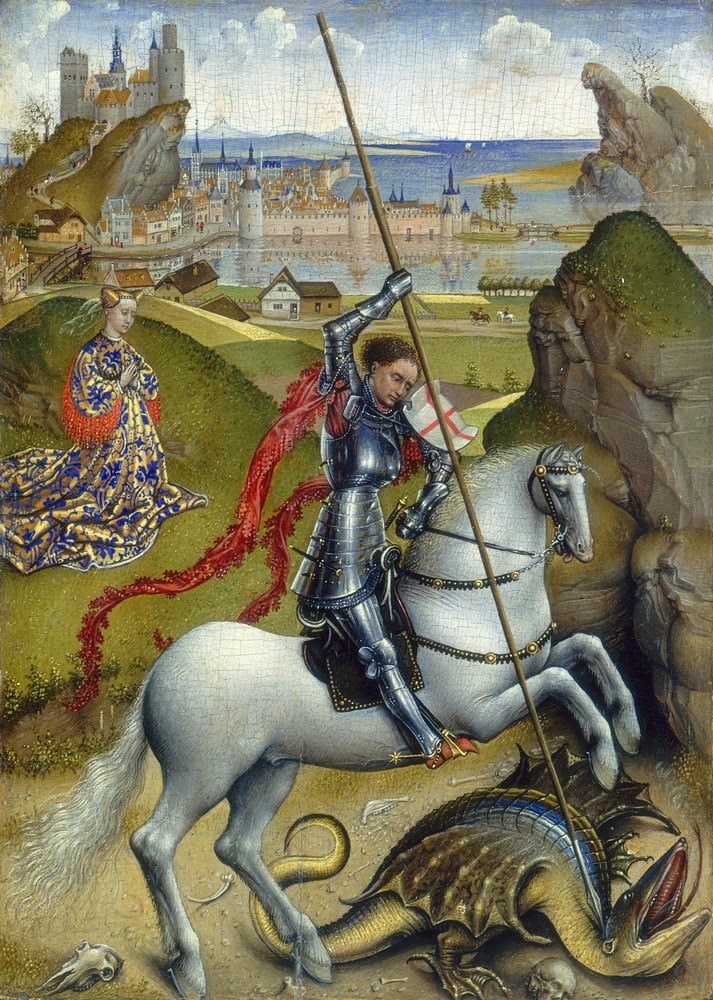
Among the Flemish artists, there was a culture of close and attentive observation of the reality; and the appreciation of the traditional form of art. This attribute has been exploited illustrious forms which resulted in the beautiful Works of Van Eyck, such as The Annunciation (Fig. 1).
The Work is subject of discussion among historians, for its symbolism, and it seems that the painting is part of a triptych. The image depicts the moment when the angel Gabriel announced to Mary that she would have the Son of God. The background is a church, in Gothic style; the floor has drawings of the Old Testament scene; and even the windows have religious references.
The clothes of the angel and of the Virgin still show rich details in the printing, and in the folds, of the trim tissue. The greeting of the Angel to Mary is registered with the inscriptions "Ave Full Gra" (Hail Mary full of Grace) of the Angel; and the response of the Virgin to the Annunciation is written with the words "Ecce Ancilla Dni" (Behold the handmaid of the Lord). Since the words are addressed to God, they were written upside down.
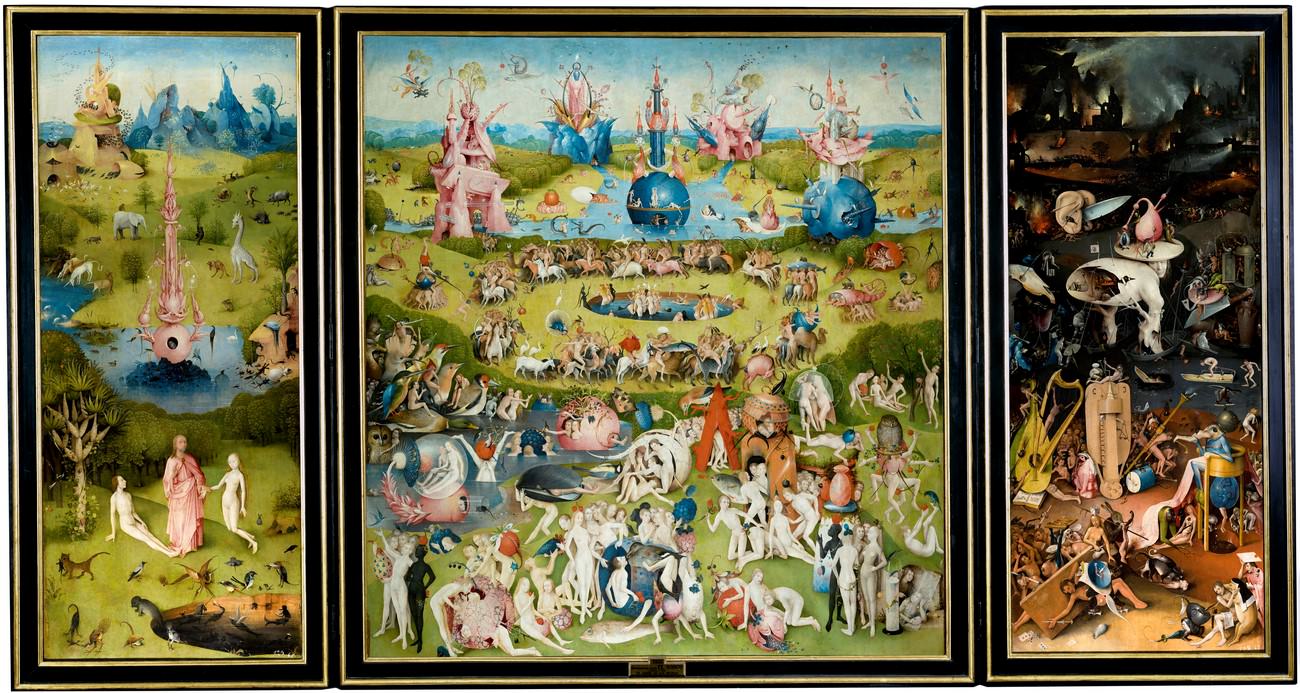
From the sixteenth century, the influence of the Renaissance, resulted in remarkable paintings. In this phase stood out Dutch artists Hieronymus Bosch (1450-1516) (Figures 3 and 5), Dirk Bouts (1415-1475) and Pieter Bruegel (The Old Man) 3 (1525/30-1569); and the German artists Albrecht Dürer (1471-1528), Matthias Grünenwald (1470-1528), and the great portraitist Hans Holbein (1497-1543) (Fig. 4).
The life of peasants in the small villages and their daily life was notably portrayed by Bruegel. Albrecht Dürer, inspired by the classics Greeks and Romans, on a detailed observation of reality, to accurately reproduce the nature.
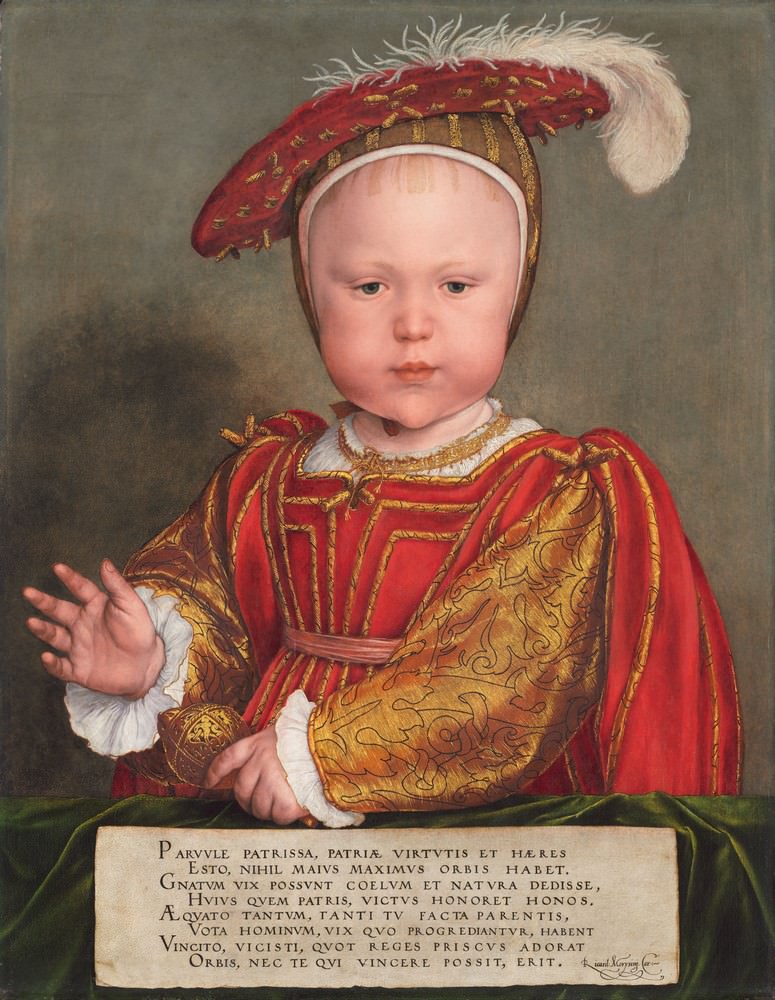
The amazing technique and the exploitation of profane subjects of Flemish Art were sharp in exceptional painting of Hieronymus Bosch, The Garden of Earthly Delights (Fig. 3). The triptych, intended for an aristocratic palace, has a central panel of 2,15 m by 1,90 meters, and two side panels of 2,15 m by 95 cm.
Althought The Earthly Paradise, on the left, doesn’t resemble the one described by the Bible, it has God, Adam and Eve, Adam and Eve, as central elements. Next to them, creeping and scary creatures, amid other animals, emerge from a lake.
The Garden of Delights is in the center pane and it corresponds to the pleasures of the flesh. There are naked men and women amid a strange nature, with animals and bizarre and grotesque plants, among innocent and erotic details. In the central panel, there is the Source of Lust, where there are seductive women. The right pane displays an abominable scene from hell, with punishment for carnal sins, through the torture.
With perfect use of details and colors, Bosch managed to portray surprisingly the concerns of the human spirit, referring to the material pleasures, the human weakness and the search for the virtues and spirituality. The closed triptych, also shows the image of the globe, painted in white and black, contrasting with the colorful interior.
The revolutionary work that disturbed the surrealists in the twentieth century, is the pessimistic conception of a world dominated by sin. For the Spanish monk José de Siguenza (1544-1606), Bosch's paintings were "a painted satire of sins and ravings of mankind" (Jose de Siguenza, WELTON, 2014, p.127).

The stunning realism of Flemish work was also printed in the works of Hans Holbein.
In figure 4, the artist portrayed Prince Edward VI as a baby, with one hand holding a scepter and the other in a gesture of blessing. The child is next to a railing proper, for the royalty and the sacred figures. The work, made in 1538, still has a poem in Latin and there are rigorous details of his garments.
The Work The Embassadors4 of Hans Holbein, was one of the first paintings to show two life-size figures.
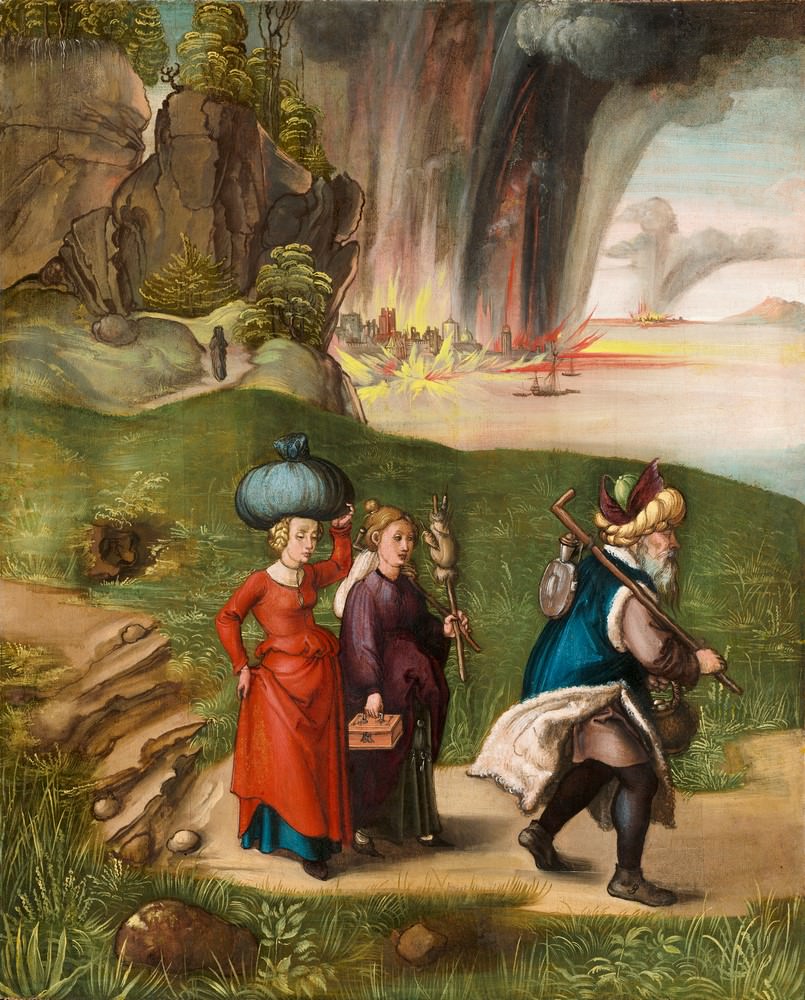
In the seventeenth century, because of Flanders being part of the Spanish Empire, the artistic approach between both intensified, and all the beauty Flemish Art eventually acquire features of Baroque.
Peter Paul Rubens painting (1577-1640), by the beauty of the work of his Spanish friend Diego Velázquez (1599-1660), acquired colorful and dynamism. This vigorous spirit of Rubens's work also inspired his countrymen as the painter Antoon Van Dyck.
Meanwhile, in the newly created Republic of Holland, Rembrandt (Fig. 7) (1606-1669) and Johannes Vermeer (Fig. 8) (1632-1675) had a descriptive and austere style, with everyday scenes.
Although little is known about the work of Figure 8, which first emerged in 1881, at an auction, in The Hague, whose authorship is attributed to Vermeer, what stands out is the effect of light on the girl's face, on the tissues and the pearl Earring.
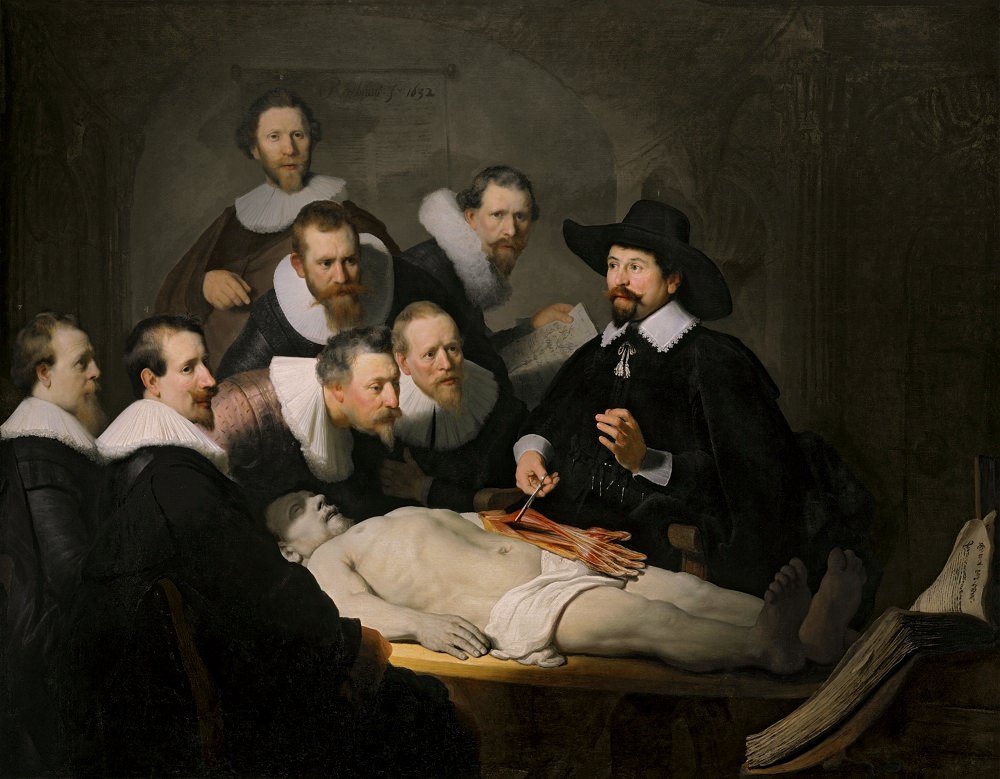
In 1640, and 1648, the end of the War of the Eight Years in, marked the cultural decline of Flanders, only reborn in 1830, with the Belgian Revolution.
The Art produced since then, is considered Belgian. The Flemish painting was the result of a visual culture based on careful observation of reality, associated with a symbolic character. This resulted in works that left evident the ability of artists and their creative and interpretative ability over the real world.
And maybe it would be fair to finished the text with the words of a great artist, as follows
I would like to paint portraits that in a hundred years would appear as a revelation (…) not by photographic fidelity, but rather (…) the appreciation of our knowledge and our present taste in color, as a means of expression and exaltation character. (VAN GOGH, 2007, p.48)
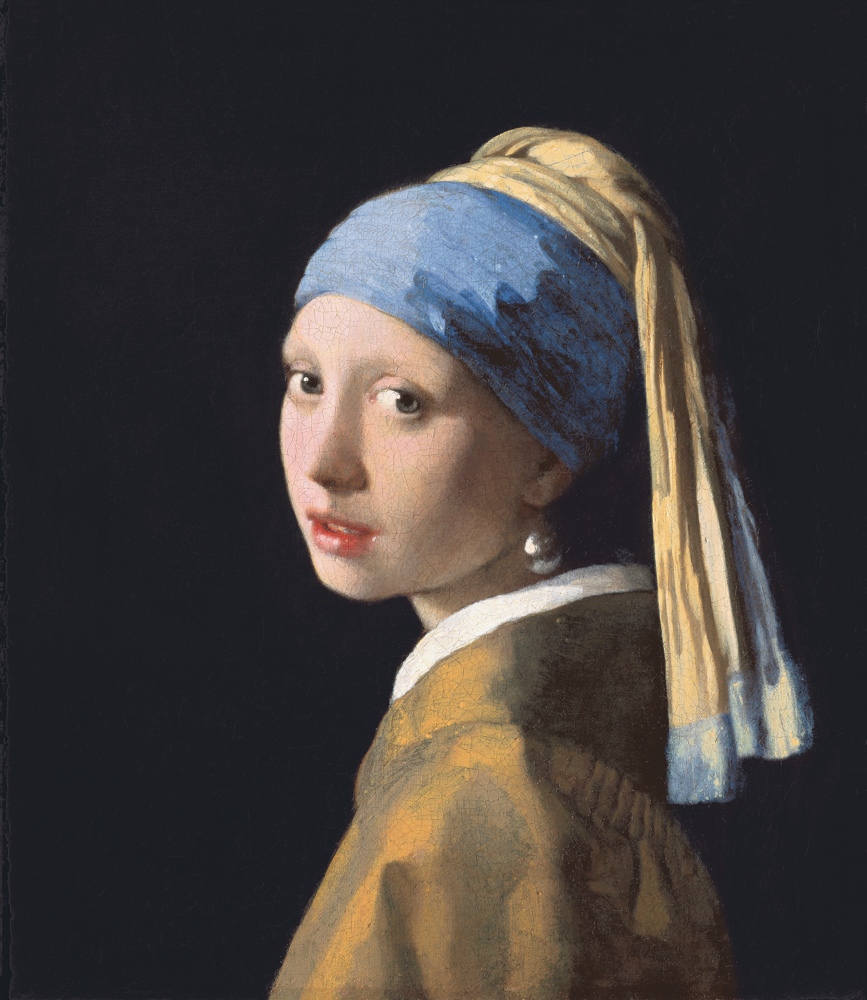
The understanding of beautiful art goes beyond shape and color, It is on the expressive and metaphorical nature of every detail, of each minutia. The contemplation of the great Art allows to sensitize the rational feelings. So is the beautiful work, so is the inspiring Flemish Art.
1 1Note that the current Flanders region is related to the North Belgium, where they speak Dutch, also known as Flemish. The South region of Belgium is called Wallonia and the official languages are French and German. Link to the history of Belgium and the current map:
psephos.adam-carr.net/countries/b/belgium/statsbelgium.shtml
Sign up to receive Event News
and the Universe of Arts first!
2 The History of oil paint can be seen at the Metropolitan Museum site:
www.metmuseum.org/toah/hd/optg/hd_optg.htm
3 Flemish Art - vídeo with the description of Bruegel’s work:
www.youtube.com/watch?v=2sTA-9h9HnU
4 Hans Holbein’s Ambassadors – description o the work:
www.youtube.com/watch?v=lYEwg7beYC4
5 Anamorphic painting:
www.youtube.com/watch?v=D1ntP7IgBzg
Prado Museum
Inaugurated in 1819, the Prado Museum, located in Madrid, is the most important museum in Spain and one of the most important in the world.
Its construction began in the reign of Carlos III and ended the reign of Fernando VII. There are important works of Spanish, French, Flemish and Italian Art in the collection.
As the Netherlands integrated the empire of Spain, the museum houses important paintings of Flemish Art. Among the artists there are names like Hans Memling, Rogier van der Weyden, Hieronimus Bosch, Brueghel, Dirk Bouts, Rubens, Rembrandt and Van Dyck.
There are still names of important artists of Italian painting, from the Renaissance until the eighteenth century. At the museum's collection, there are sculptures of classical antiquity; a collection of decorative art; and Francisco Goya's drawings.
In a virtual tour, you can choose the language and know more works by each artist.
Link to the Prado Museum: www.museodelprado.es
…
Liked? Leave a comment!
The figures:
Fig. 1 – such as The Annunciation, Van Eyck, 1434-1436, National Gallery of Art, Washington. Andrew W. Mellon Collection.
Fig. 2 – Saint George and the Dragon, Weyden, before 1432-1435, National Gallery of Art, Washington. Ailsa Mellon Bruce Fund.
Fig. 3 – Garden of earthly delights, Hieronymus Bosch, 1503/4, Prado Museum, Madrid, Spain.
Fig. 4 – Edward VI as a Child, Hans Holbein, 1538, National Gallery of Art, Washington. Andrew W. Mellon Collection.
Fig. 5 – Death and the Miser, Bosch, 1485-1490, National Gallery of Art, Washington. Samuel H. Kress Collection.
Fig. 6 – Lot and His Daughters, Albrecht Durer, around 1496-1499, National Gallery of Art, Washington. Samuel H. Kress Collection.
Fig. 7 – The anatomy lesson of Dr. Tulp, Rembrandt, 1632, Mauritshuis, Haia.
Fig. 8 – Girl or girl with a Pearl Earring, Vermeer, 1665/1666, Mauritshuis, Haia.
You might also like:
- First Traces of Modern Art – Abstract Expressionism in Brazil by Rosângela Vig
- First Traces of Modern Art – Expressionism in Brazil by Rosângela Vig
- Modern Art – Abstract Expressionism by Rosângela Vig
- First Traces of Modern Art – Impressionism in Brazil by Rosângela Vig
- Modern Art – Surrealism by Rosângela Vig
- Modern Art – Abstractionism by Rosângela Vig
- Modern Art – Cubism by Rosângela Vig
- Modern Art – Expressionism by Rosângela Vig
- First Traces of Modern Art – Symbolism by Rosângela Vig
- First Traces of Modern Art – Post-Impressionism by Rosângela Vig
- First Traces of Modern Art – Impressionism by Rosângela Vig
- Romanticism in Brazil by Rosângela Vig
- Romanticism by Rosângela Vig
- The Neoclassical Art in Brazil by Rosângela Vig
- The Rococo in Brazil by Rosângela Vig
- The Neoclassical Art by Rosângela Vig
- Rococo by Rosângela Vig
- How appears the Surreal Work by Rosângela Vig
- The Baroque in Brazil by Rosângela Vig
- Baroque by Rosângela Vig
- Mannerism by Rosângela Vig
- Renaissance by Rosângela Vig
- The Contemporary, A little about the Urban Art by Rosângela Vig
- The Naive Art – Ingénue Art by Rosângela Vig
- Middle Ages, Byzantine Art by Rosângela Vig
- Middle Ages, Romanesque Art and Gothic Art by Rosângela Vig
- The Roman Art by Rosângela Vig
- Greek Art, Art History in Ancient Greece by Rosângela Vig
- The Egyptian Art by Rosângela Vig
- The Prehistoric Art by Rosângela Vig
- The beauty Art and the sublime Art by Rosângela Vig
- The Game of Art by Rosângela Vig
- The Misunderstood Art by Rosângela Vig
ROSÂNGELA VIG
Sorocaba –São Paulo
Facebook Profile | Facebook Fan Page | Website
Columnist at Website Obras de Arte
E-mail: [email protected]

Flemish Art – Renaissance in Northern Europe by Rosângela Vig | Website Obras de Arte
http://t.co/qReaoLqPYr
Flemish Art – Renaissance in Northern Europe by Rosângela Vig | Website Obras de Arte… http://t.co/CquuWjfGRb
Flemish Art
Site Works of Art
My new article http://t.co/Dw2oRlHvhy
Flemish Art – Renaissance in Northern Europe by Rosângela Vig http://t.co/umdYH5vw44
My new text – The Flemish Art
Site Works of Art… http://t.co/GX3e2TmRBJ
Flemish Art – Renaissance in Northern Europe http://t.co/OPkLwDi9ak
Flemish Art – Renaissance in Northern Europe by Rosângela Vig http://t.co/umdYH5N6VC
Flemish art in the art site… http://t.co/Nd8JFQIR3Y